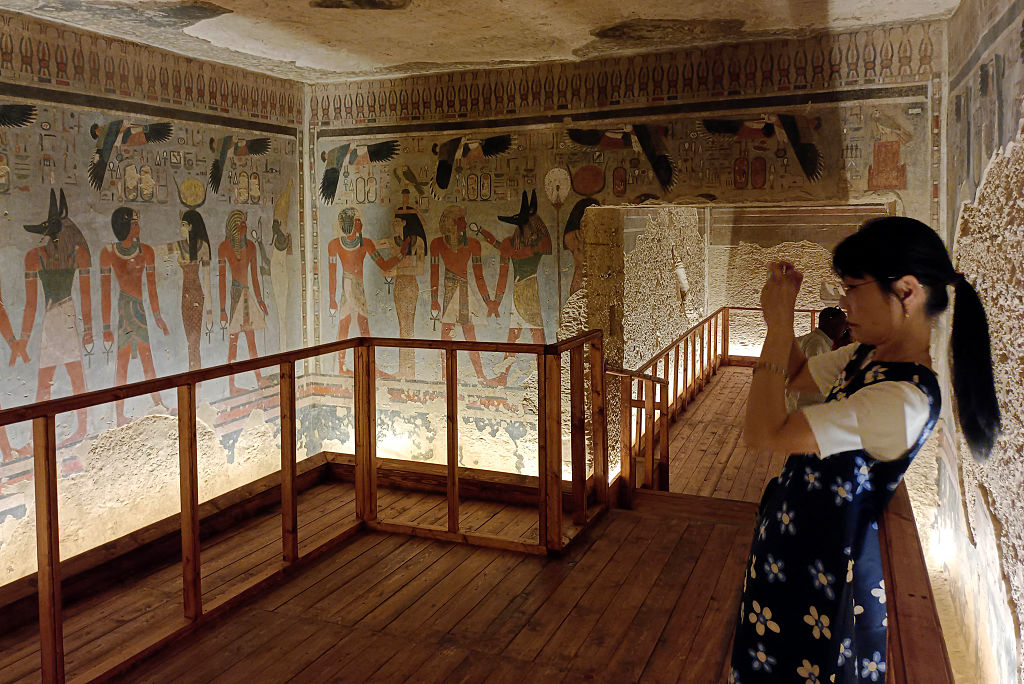One of the largest tombs in the Valley of the Kings reopened to the public this past weekend. The tomb of Amenhotep III, who ruled for approx. 38 years in the 14th century BC, had been closed for 20 years, during which time a team from Waseda University in Tokyo was overseeing the renovation.
The tomb was discovered in 1799 by two French engineers sent to Egypt by Napoleon; at that time, its contents had already been looted. Formal excavations began in the early 1900s. (Amenhotep III’s mummy had previously been moved to his grandfather’s tomb, and is now on view at the National Museum of Egyptian Civilization.)
Related Articles

According to the Associated Press, who spoke with the secretary-general of Egypt’s Supreme Council of Antiquities at the reopening event, the tomb of Amenhotep III is not fully decorated, though it does include the structural frame of the looted sarcophagus box. The newly restored paintings on the walls of the tomb show the pharaoh among ancient Egyptian gods. A long passageway beneath the valley leads to a main burial chamber for the pharaoh, along with two others for each of his wives.
The public reopening of Amenhotep III’s tomb on Oct. 4 fell about a month before the long-awaited full opening of Cairo’s Grand Egyptian Museum, which houses over 100,000 artifacts. Plans for the museum were announced in 1992, and construction began in 2002. In October 2024, almost one year ago, a dozen of GEM’s main galleries opened to the public. The rest of the museum was meant to open in July, but the new—and seemingly final—ribbon-cutting will be Nov. 1.
Tourists visiting the new museum in Cairo will now have one more tomb in the Valley of the Kings to visit, should they decide to make the trip 400 miles south to Luxor.

